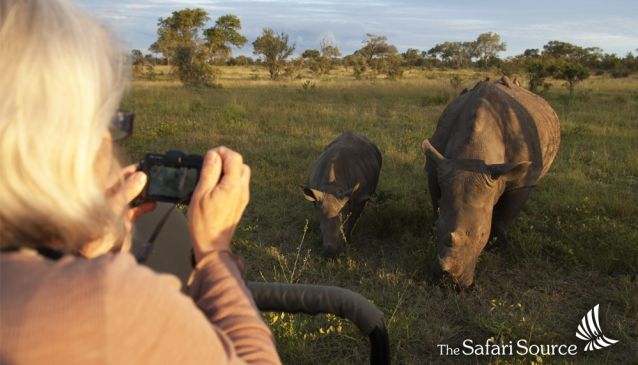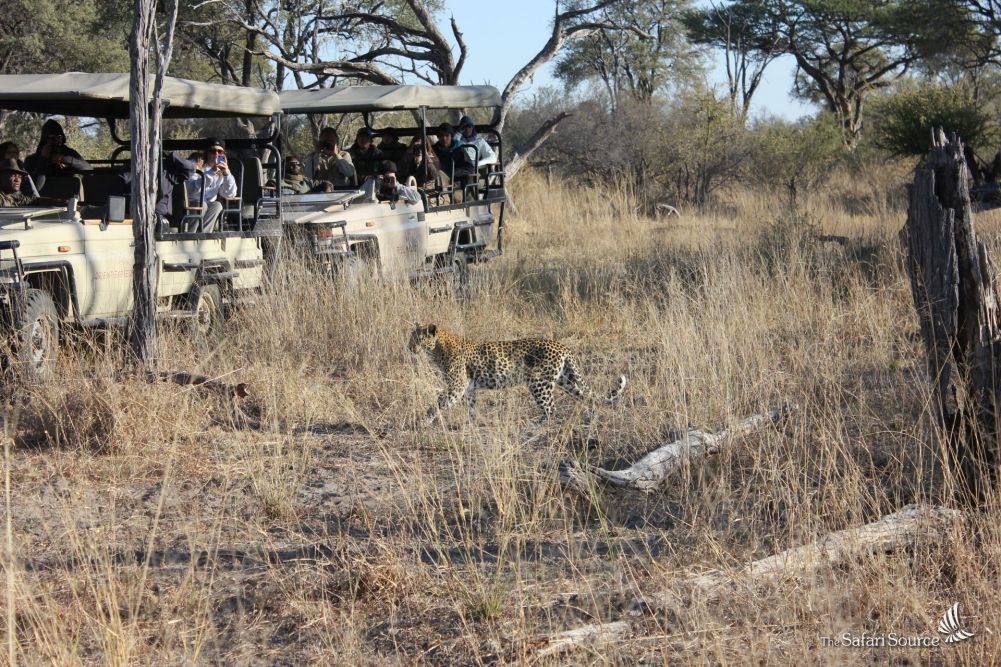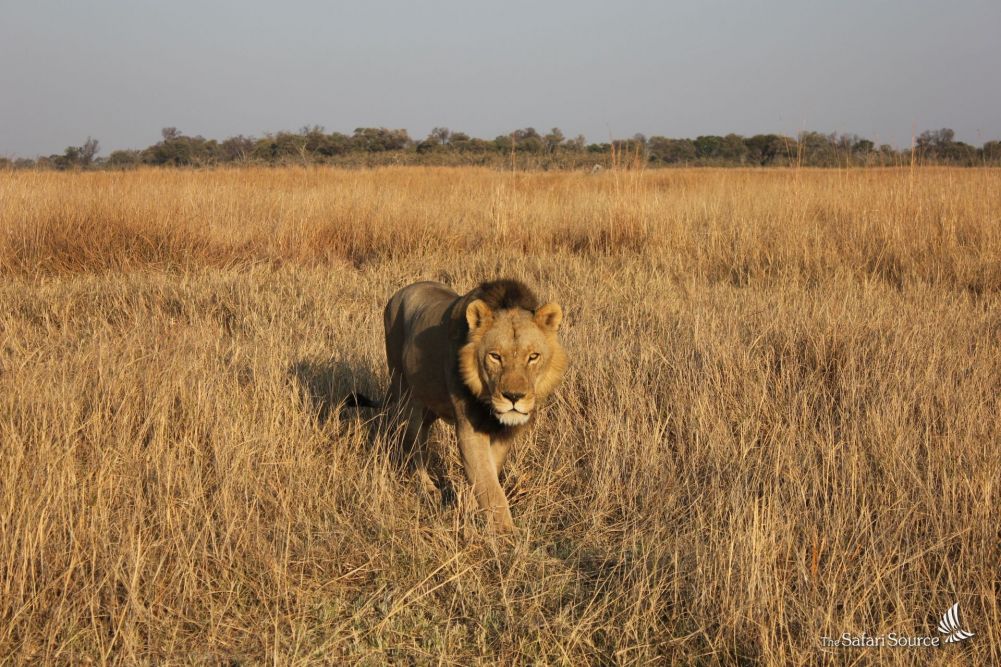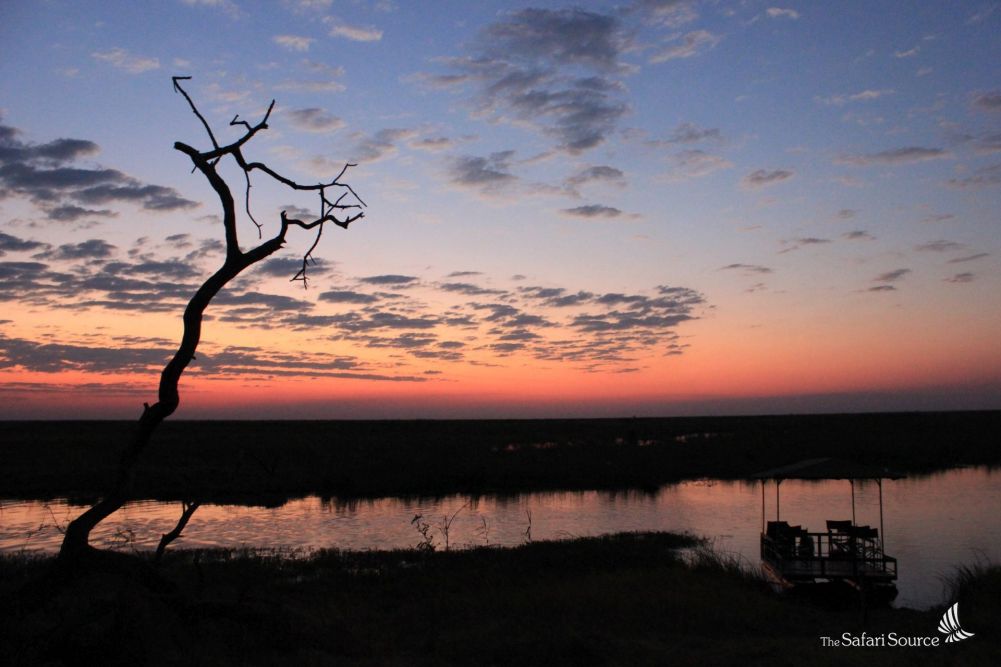The Daily Adventure - Days in the bush start early, with sunset, around 6 o"clock.

In Part I, we described how to get to the remotest places in southern Africa. We discovered the incredible atmosphere of the bush and indulged in authentic safari accommodation amidst wilderness. Now let's explore the daily excitements awaiting you whilst on Safari...
The Daily Adventure
Days in the bush start early, with sunset, around 6 o’clock – depending on the area and if you are travelling in Africa’s winter or summer time. Getting up early on holidays might be rather unusual for most people, but essential on safari. Trust me, with all the excitement in mind, it is quite easy to get up – even if you are not a morning person at all, like me. The adventure lies ahead!
It is in the early mornings, early evenings and also during night that predators such as the big cats and nocturnal animals like hyena are active. However, people are only allowed within the national parks from sunrise to sunset as visitors are not allowed to drive in the dark. Therefore most camps offer morning activities from 6 / 6.30 am to 11 am and afternoon activities from 3 pm to 6 /6.30 pm. Between 11 am and 3 pm, you are in camp for lunch and your siesta, as most animals are doing their siesta as well. Not much wildlife is spotted under the hot African midday sun. Camps situated on private concessions also offer night drives because within their area, they are allowed to drive after dark. This is something to keep in mind when choosing your safari accommodation!

A Leopard sighting on A Game Drive
In most camps, there are a couple of activities for game viewing to choose from. Each of them has its own advantage and charm. We recommend to do all offered to experience Africa’s wilderness in as many ways as possible. Game drive, night drive, walking safari, boat cruise, Makoro ride and canoeing are the common ones. Many camps offer at least 2 or 3 of these activities. But what to expect?
The easiest way to explore the bush is by car: In an open 4x4 game drive vehicle you make your way through the wilderness, always watching out for wildlife and other interesting things so spot. The advantage of game drives is that far distances and wide areas can be covered. Although your guide is only allowed to go a maximum of 30 km/h, you get to see a lot on an approximately 4 hours’ drive. In the open vehicle you only have to sit back and relax, as best as possible on bumpy dust roads. The further in the back of the car, the more you are jarred. However, that’s part of the adventure and also known as ‘the African massage’. Most of the time you are below the speed limit anyways and won’t even feel the bumps – especially since you are busy enjoying nature and wildlife! Whenever you feel like stopping, tell your guide and he halts the car for you to take pictures. Cold drinks for hot days are provided for your refreshment. You also stop somewhere nice either for 10 o’clock tea, bush brunch or sundowner. On request your guide lets you know where it is safe to relieve yourself on the bush toilet – a loo with a view. But don’t go strolling on your own too far away from the vehicle…

A Lion Peaceful Passing An Open Safari Vehicle
Another activity by car is night spotting. After dark, you search the bush with a spot light for nocturnal animals such as lion, leopard, cheetah, hyena and hippo on shore. From afar, only the wildlife’s eyes are visible, reflecting in the spot light. However, your guide knows which animal you are about to approach. S/he also knows how close to get and where to point the spot light – as it can get dangerous if an animal feels threatened. Especially poor-sighted animals like elephants might easily charge at night if blinded by lights. Also keep your distance to lions on the prowl whereas by car you can get quite close to them once they fed. Then they are way too busy with their siesta to care about you.
On a walking safari, you discover the bush on foot. Your guide gives you definite instructions for your safety. Again, listen carefully to prevent endangering you and the other guests. Usually, two guides lead your small group through wilderness, one in the front and one in the back to protect you when you march in single file. The leading guide carries a rifle for your safety – should you be charged by an animal. Before you begin your walk, your guide examines which direction to take, depending on which way the wind blows. It is important that the wind does not blow in the same direction as you walk: otherwise your scent warns the animals that you are approaching, instead of you spotting them first. When on a walking safari, remember that wildlife reacts different to your presence. As long as you are in a car and not moving fast, wild animals only recognize the vehicle as a whole. It does not constitute a threat to them.
However, due to many years of experiencing hunters and poachers, wildlife knows that people on foot can be dangerous – especially with guns in hand. Therefore, when booking your bush accommodation you should ask your travel agent if the area used to be a hunting area. Walking safaris are then most likely concentrating on smaller flora & fauna because the bigger wildlife will be too skittish. Nevertheless, no need to be scared of a walking safari. Your guide is well trained and probably grew up in this area. He knows pretty much everything about nature and its rules and he happily shares his/her incredible knowledge with you. Even if you do not come across big animals the walk is amazing: track the foot prints, learn about the plants the animals feed from and even the poo is very interesting to analyse. Your guide will tell you a whole lot about the African ecosystem.
Many camps also offer water activities such as (motor-)boat cruises, canoeing and/or Makoro rides – yet another impressive way to explore the wild. Cruising or paddling along the water you watch wildlife on shore without getting in its way. Observe them drinking or sunbathing on the waterfront. Being on the water also means being on an eye to eye level with the animals, e.g. hippos cooling down grunting and snorting happily in the water. However again, getting too close isn’t advisable. Keep your distance and so will the wildlife. Never put your hands, feet nor anything overboard nor into the water – there might be crocs mistaking you for a tasty dinner. Watching elephants crossing the river is another mind blowing experience. By boat it is even more fascinating to see the entire spectacle, being much closer than by car. Hard to imagine that these huge animals are able to swim!
In one of the traditional Makoros, a dugout canoe used in Botswana, you are gliding on water level. It is very important that you follow the guide’s instructions as the Makoro can upset easily if you do not sit still. Once stable it is very impressive though. Your guide standing in the front or the back, paddling and steering with a huge paddle, somehow resembles a Venetian gondola. The Makoro ride is much more exciting of course, gliding along amidst nature and you being the only ones around!
Once the sun sets, be amazed by a fascinating African sky covered in unique colours!! From the boat enjoy the sun’s reflection on the water. From the car the landscape draws your attention. Either way, this unforgettable memory will stay in your mind for a long time and hopefully reminds you of all the incredible feelings you had during your African safari.
Miriam Reiter - The Safari Source

Magnifixent African Sunset Overlooking The Linyati Marsh ,Botswana